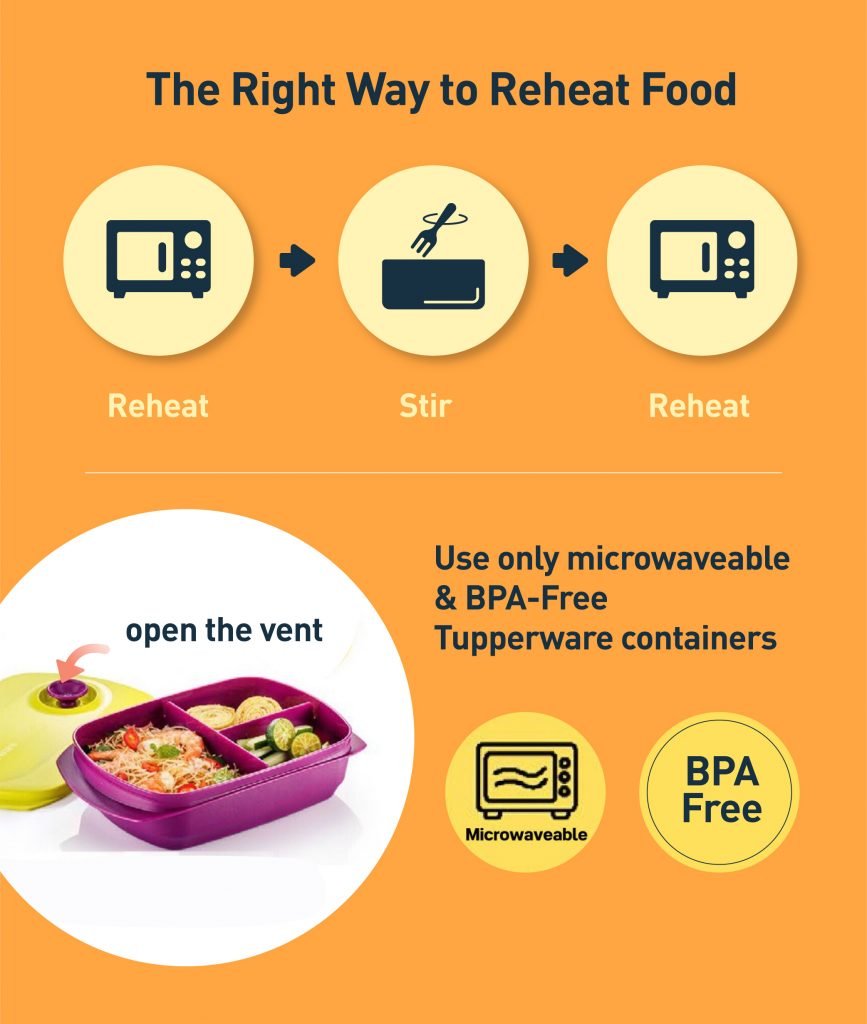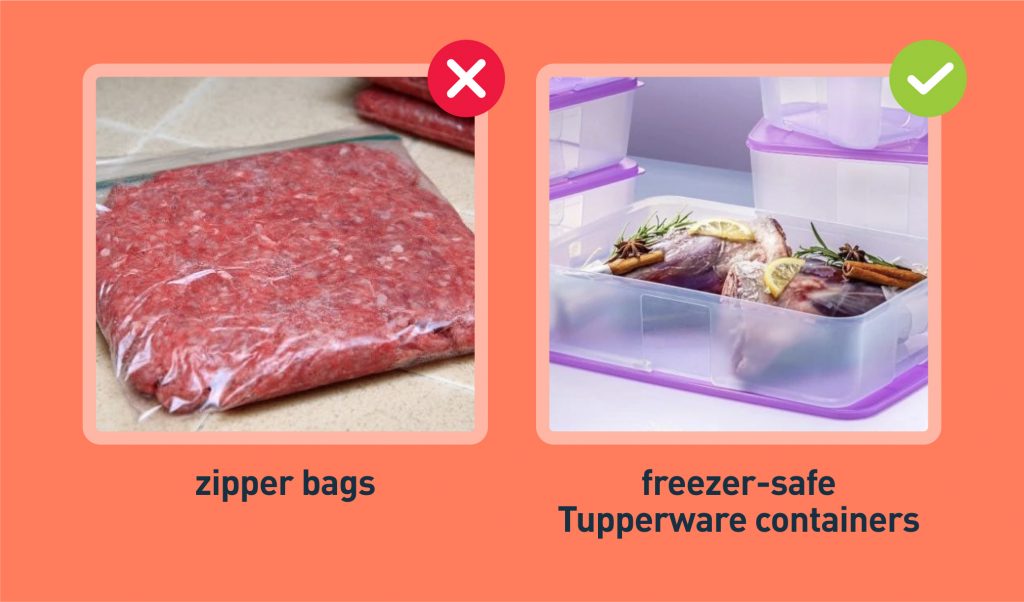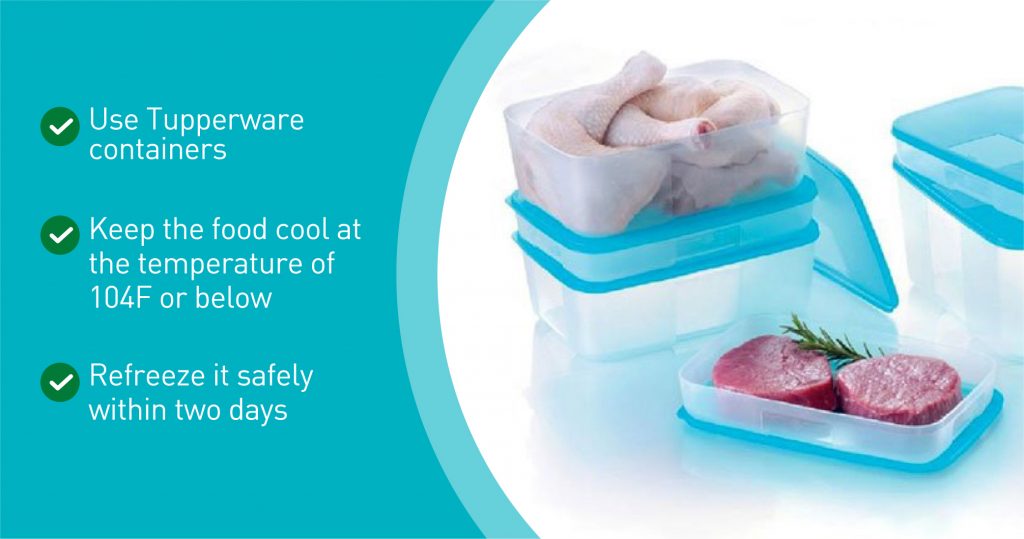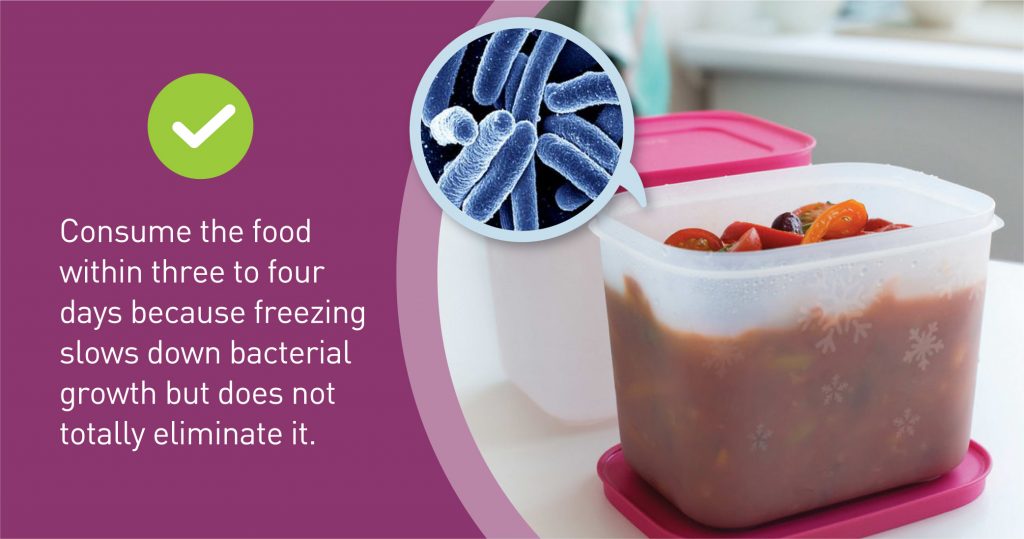Tupperware containers are the best bet when it comes to storing leftover or reheating food. Nobody can deny their multipurpose functions. But, is Tupperware microwave-safe or safe to be used in any conditions?
Tupperware containers enjoy a potential edge over dollar store plastic storage boxes by lasting a lifetime. The containers are also a very promising option to freeze your juicy meat without causing any freezer burn. Moreover, they also keep your leafy greens fresh and crisp by circulating the cold air evenly into your product stock.
Although they are a good option for food storing, prepping, cooking, and serving, never ignore these food safety myths to prevent your family from foodborne diseases.
Table of contents
- Top 5 Food Safety Myths And How To Handle Them The Right Way With Tupperware Safely
- Myth 1: Since Tupperware Container Is Safe And BPA-Free, I Can Reheat It Forever
- Myth 2: Freezing Food Will Kill Bacteria If Frozen Properly
- Myth 3: Reheating Food Kills Bacteria
- Myth 4: You Can’t Refreeze Meat Once Thawed Even You Store It Safely in Tupperware Container
- Myth 5: It is Safe To Eat Food That Smells Fine
- Conclusion
Estimated reading time: 7 minutes
Top 5 Food Safety Myths And How To Handle Them The Right Way With Tupperware Safely
Let’s take a look at some common myths about food safety. Are they true or just some misconception that is made up to make one’s life easier? Also, check out our recommendation of how to handle food the right way.
Myth 1: Since Tupperware Container Is Safe And BPA-Free, I Can Reheat It Forever

Tupperware containers manufactured before 2010 are not officially BPA-free. You might want to replace old ones with new stock that is BPA-free. While they are BPA-free, observing precautions when reheating food is still necessary. Tupperware with microwave symbol is safe for oven use, look for it on the container.
As per the FDA, you should not reheat your food for more than three minutes in one go. Once reheated, finish the food within two hours. If you think you can’t finish the food, it is best to throw it away or reheat the food in a small portion.
The Right Way:
Reheat food straight for a minute then switch the microwave off. Fold and stir your food content in the container using a spatula and then toss it again in the microwave for one more minute. Use only microwaveable Tupperware containers. And remember to open the vent.

Myth 2: Freezing Food Will Kill Bacteria If Frozen Properly

Many people think that freezing the food in the freezer can kill bacteria once and for all. Well, that is not really the case. When you freeze food like meat, for example, it might already have bacteria that survive sub-zero temperatures. The freezing method only allows the bacteria to be inactive and put the bacteria in hibernation mode.
Once you thaw the food, the bacteria may quickly start to activate and multiply which leads to food poisoning. So remember, freezing your food does not destroy the bacteria. Instead, cooking the food at the right temperature kills the bacteria in your food.
The Right Way:
Do not freeze your food in zipper bags since it can leave your meat juices dry. Use freezer-safe Tupperware containers instead because they will keep your meat succulent.
Additionally, avoid thawing meat on a countertop at room temperature. The best ways to defrost food are leaving them in the refrigerator, using the microwave or cold water. Once you defrost the food, cook it immediately.
Myth 3: Reheating Food Kills Bacteria

Reheating food will kill bacteria. That sounds about right, however, it is not always true. There are a number of things that you need to consider. To properly kill bacteria in the food, you have to cook or reheat it with a minimum temperature of 165F thoroughly.
Additionally, some bacteria can produce heat-resistance toxins that cause food poisoning. These toxins can be caused by leaving the food at room temperature for longer than two hours. Unfortunately, you can’t destroy these toxins just by high cooking and reheating temperatures.
The Right Way:
Although Tupperware is microwave safe, be sure to reheat or cook your food at a temperature of at least 165F whether you are using a microwave, oven or stove. Stir occasionally to avoid cold spots in your food. Food that is shaped unevenly and varies in thickness can leave cold spots where microorganisms survive and multiply.
The safest way to reheat your food in a microwave is by using containers that come with vented lids like the Tupperware containers. Covering the container while reheating allows the heat from the microwave to spread evenly and warm the food completely.
Read More: How to Thaw Meat Safely?
Myth 4: You Can’t Refreeze Meat Once Thawed Even You Store It Safely in Tupperware Container

Have you ever contemplating whether you should refreeze meat that has already been thawed or just throw it away? It feels bad to throw away the meat but at the same time, you don’t want to get sick from food poisoning, isn’t it?
Good news! You can refreeze raw foods such as meat, seafood, poultry and egg products even after being thawed using a reliable Tupperware container in the refrigerator for two days. However, avoid freezing your perishable items if they have been in the fridge for more than four days.
The Right Way:
Thaw food in the refrigerator by leaving it overnight in the Tupperware containers. Keep the food cool at the temperature of 104F or below. Refreeze it safely within two days. However, you should not refreeze the partially cooked meat or defrosted meat left outside at room temperature especially in hot weather for more than two hours.

Also Read: How to Refreeze Meat once Thawed?
Myth 5: It is Safe To Eat Food That Smells Fine

Some spoiled food may not smell, taste or look bad. However, this does not mean that it is safe for consumption. Smell, taste, color and texture are no longer reliable indicators for food safety. Sometimes, you can’t really rely on your sense on deciding whether the food is safe to be eaten.
Bacteria can make your food turn slimy, mushy, moldy or produce a bad smell. These are some common and obvious signs for you to toss that food away. On the other hand, pathogenic bacteria can grow on food but do not cause any noticeable changes to the food. So, you need to be extra careful.
The Right Way:
It is important to freeze your food right away with the Tupperware containers if you know you will not be eating it within two days. Consume the food within three to four days because freezing slows down bacterial growth but does not totally eliminate it.
Conclusion
Using airtight Tupperware containers for the refrigerator is one of the safe ways to extend the life of your food without affecting the taste, aroma and texture. Storing your food properly using appropriate containers does not only help to keep your food life shelf longer, but also helps to prevent foodborne illness.
So, keep your Tupperware containers handy. And be sure to take extra precautions when it comes to food safety.

Read more:




